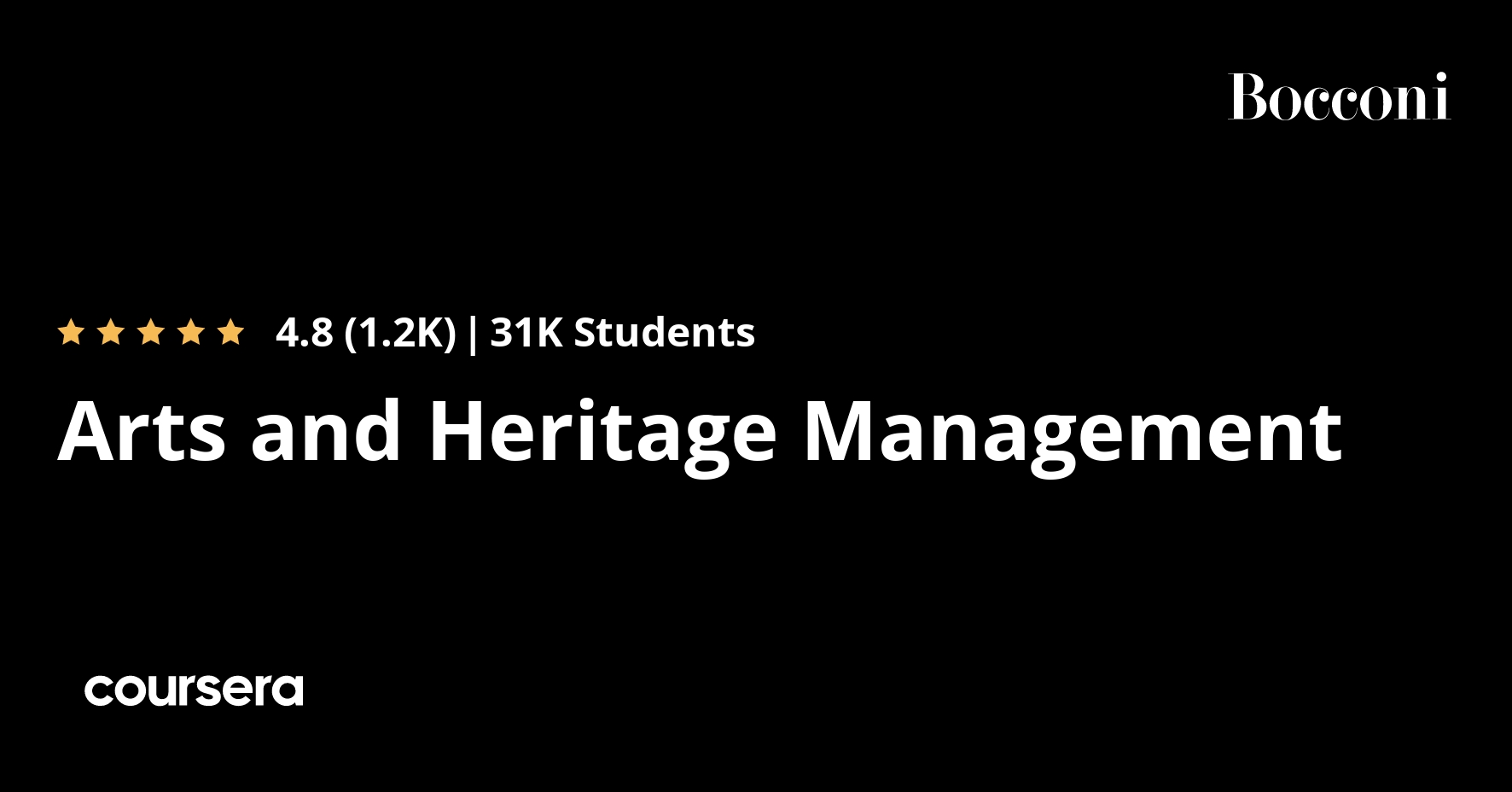Description
Today cultural institutions are facing important dilemmas in many aspects of their management. Over the past decades, a new figure has emerged that of the art manager.
Imagine you went to work every day to connect artists with audiences, vision with reality, and money with a mission. That is what managers in the arts do, they play an essential role in transforming the minds, lives, and communities through creative expression.
This course has been conceptualized to address the need of skills and techniques to help professionals and managers in running art and cultural institutions.
Learning Objectives
There are three objectives to this course. First, we will approach the biggest issue cultural institutions face, the coexistence of managers and curators and giving evidence as to when, how, and why they can get along. Second, we will focus on some contemporary facets on what is means to manage a cultural institution and what cultural managers should expect and be able to face. And lastly, we will provide models and tools to design and implement appropriate courses of action to satisfy customers (visitors and audiences) and build an advantage over the competition.
Course Structure
The course is divided into six sections. Five sections are dedicated to specific aspects and themes of managing cultural institutions, while the sixth section is dedicated to individual interviews of prominent cultural institution managers on specific topics. The involvement of professionals and managers gives an incredible value to the learning experience of this course.
Each module is paired with a quiz and discussion forums to reflect on the variety of the heritage management, its complexity, and the power of the network that we will build together during the course.
Successful completion of the quizzes is required for a course certificate as explained in the Grading Policy page.
If you love art and want to make an impact in this unique and fantastic sector, this course will support you in understanding the peculiarities of this sector and how to leverage on its tools to make a bigger impact.
Look forward to meeting you online!
Acknowledgements:
Vatican Museums: www.museivaticani.va
Cenacolo Vinciano:
www.beniculturali.it/mibac/export/MiBAC/sito-MiBAC/Contenuti/MibacUnif/Eventi/visualizza_asset.html_1283837989.html (ITA)
FAI (Fondo Ambiente Italiano): eng.fondoambiente.it
MUVE (Fondazione Musei Civici Venezia): www.visitmuve.it
The National Trust: www.nationaltrust.org.uk
The Archeological Site of Paestum: www.museopaestum.beniculturali.it whc.unesco.org/en/list/842
Museo dell’Opera del Duomo (Florence): www.museumflorence.com
Museo del Violino: www.museodelviolino.org
_________________________________
Disclaimer – Since some of the videos are conducted with those whose native language is not English, we have decided to sometimes preserve their more emphatic speech to keep a tighter match between the audio and subtitles.
What you will learn
CURATORSHIP Vs. MANAGEMENT
Curators & Managers: What do art and heritage need? How do products generate value for the customer and how so those customers value these products and their quality.
HERITAGE AND THE MARKETPLACE: A DELICATE EQUILIBRIUM
“Art for art’s sake.” Does it still work? How important is the role of visitors to a museum or an audience in a theatre for defining an institution’s cultural offering?
EMOTIONS Vs. RATIOS: HEDONIC CONSUMPTION AND THE ROLE OF EXPERIENCE
How do consumers and visitors make their choice? How does the environment have an effect on consumers’ behavior? How can consumers and visitors be leveraged to co-create experiences? Learning how emotions and reasons interact in the process on art consumption is fundamental to manage a cultural institution more effectively and ensure its long-term sustainability.
BRANDING HERITAGE TO BUILD LOYALTY
Consumers and visitors’ loyalty is one of the most pressing issues for today’s art institutions. Thanks to technology and globalization, visitors have access to more information and choices, thus they are less inclined to stick with just one brand. What are the best ways to enforce brand loyalty and retain visitors while attracting new ones?







